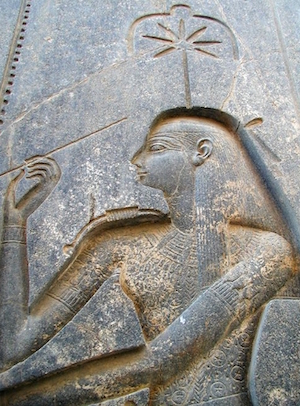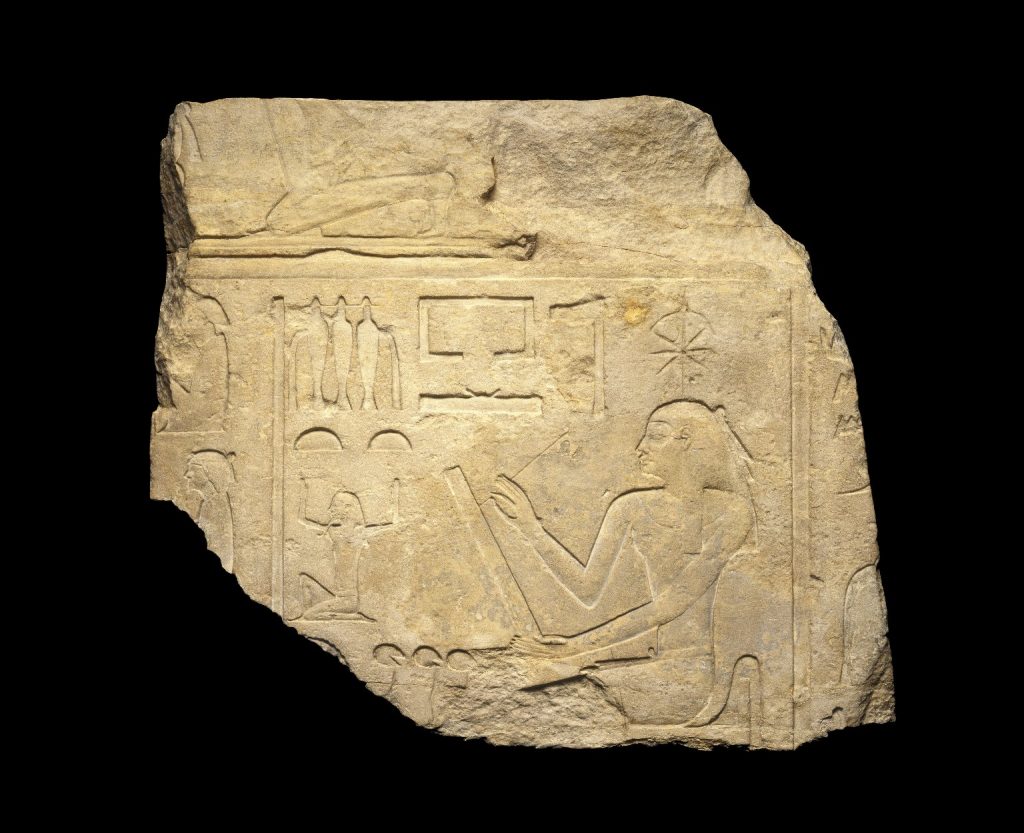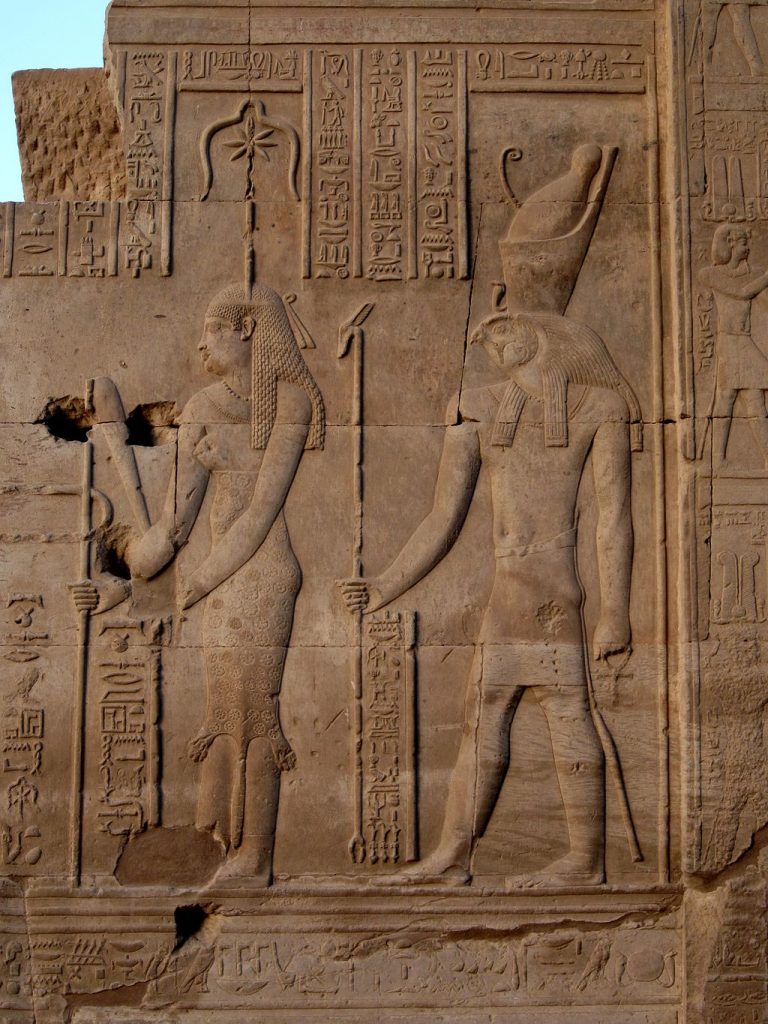Seshat (Sesha, Sesheta or Safekh-Aubi) was a goddess of reading, writing, arithmetic, and architecture who was seen as either the female aspect of Thoth, his daughter, or his wife. They had a child called Hornub. This actually means “gold Horus“, so Seshat was sometimes associated with Isis. She was the scribe of the pharaoh, recording all of his achievements and triumphs including recording both the booty and the captives taken in battle. She was also thought to record the actions of all people on the leaves of the sacred persea tree.

Seshat was known by the epithet “Mistress of the House of Books” because she looked after the library of the gods and was the patron of all earthly libraries. She was also patron of all forms of writing, including accounting, auditing, and the taking of census. According to one myth, it was actually Seshat who invented writing, but it was her husband Thoth who taught the people to write.
It is interesting to note that she is the only female character who was actually depicted in the act of writing. A number of other women were depicted holding the scribe’s palette and brush, indicating that they could write, but not actually engaged in writing.

Seshat was also given the epithet “Mistress of the House of Architects” and from at least the Second Dynasty she was associated with a ritual known as “pedj shes” (“stretching the cord”) which was conducted as part of the foundation rituals when erecting stone buildings. The “cord” refers to the mason’s line which was used to measure out the dimensions of the building.
She was occasionally associated with Nephthys. For example, in the Pyramid Texts she is given the epithet “The Lady of the House” (nbt-hwt, ie Nephthys) while Nephthys is described as “Seshat, Foremost of Builders”.

So far, no temple specifically dedicated to Seshat has been located and there is no documentary evidence that one ever existed. However, she was depicted in a number of other temples and we know that she did have her own priests because Prince Wep-em-nefret (Dynasty Four) was described as “Overseer of the Royal Scribes” and “Priest of Seshat”. However, it seems that as Thoth grew in importance he absorbed her roles and her priesthood.
She was depicted as a woman wearing a leopard skin dress (as worn by Sem priests) wearing a headdress composed of a flower or seven pointed star on top of a pair of inverted horns. She was occasionally called “Safekh-Aubi” (or “Safekh-Abwy” meaning “She of two horns”) because of this headdress, although it is also suggested that “Safekh-Aubi” was in fact a separate (if rather obscure) goddess. However, others have suggested that the horns were originally a crescent moon, representing her husband (or alter ego) Thoth. Finally, it is sometimes suggested that the “horns” actually represent a bow. Unfortunately there is no clear evidence to confirm which view is correct.
Her headdress also represents her name which was not spelled phonetically (the semi-circular bread loaf and the seated woman are both female determinatives). She is often shown offering palm branches (representing “many years”) to the pharaoh to give him a long reign.
Bibliography
- Bard, Kathryn (2008) An introduction to the Archaeology of Ancient Egypt
- Budge, E Wallis (1904) The Gods of the Egyptians
- Pinch, Geraldine (2002) Handbook Egyptian Mythology
- Watterson, Barbara (1996) Gods of Ancient Egypt
- Wilkinson, Richard H. (2003) The Complete Gods and Goddesses of Ancient Egypt
Copyright J Hill 2016